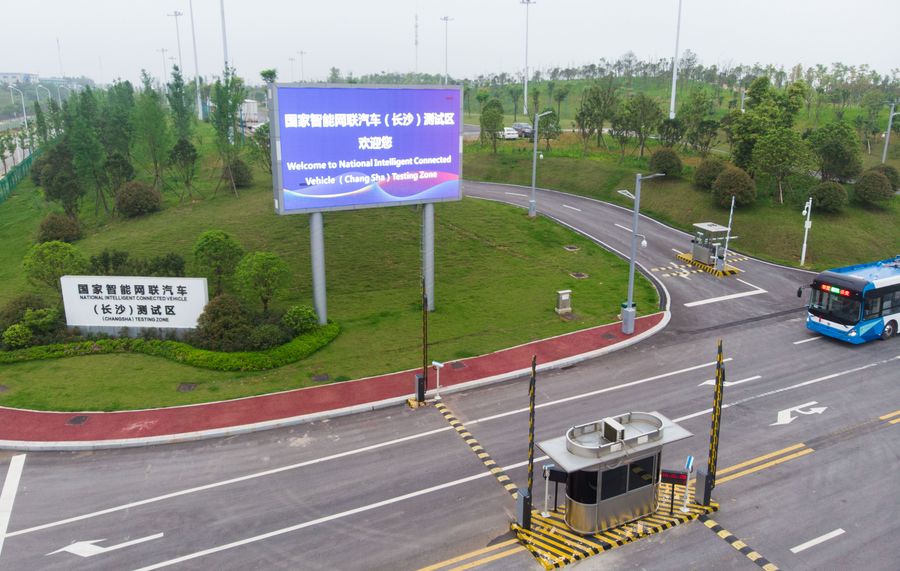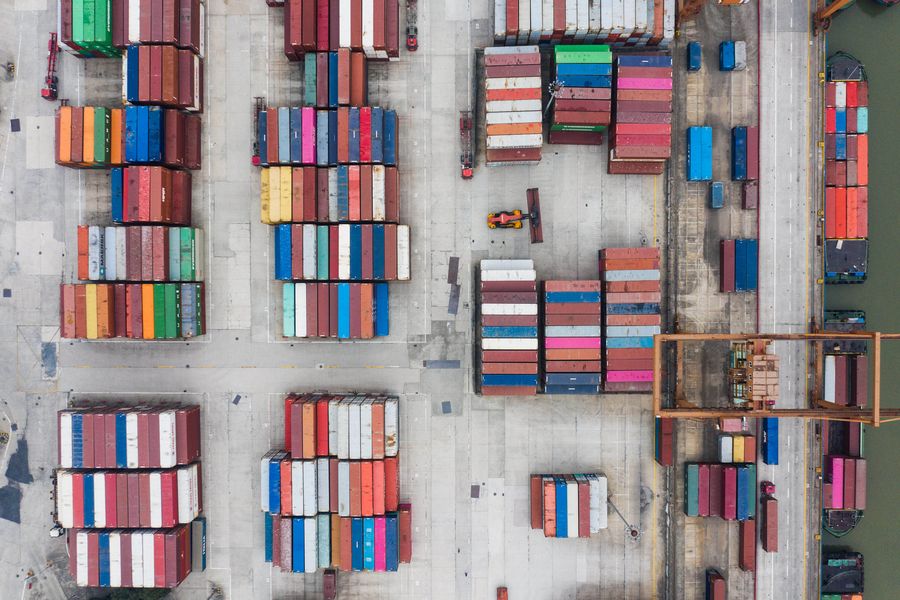Provincial 'two sessions' signal China's high-quality development
China's local "two sessions" have sent signals of sustained growth and high-quality development.
As China entered the local "two sessions" season earlier this month, the provincial-level regions across the country have sent signals of sustained growth and high-quality development.
The local "two sessions," the annual meetings of provincial-level lawmakers and political advisors, discuss local economic and social development in the past year and make plans for the year to come.
Economic growth
Xu Dazhe, governor of central China's Hunan Province, said the province maintained steady economic growth in 2019 when delivering his government work report at the annual session of the provincial people's congress last week.

Photo taken on April 28, 2019 shows a view of the National Intelligent Connected Vehicle (Chang Sha) Testing Zone in Changsha, central China's Hunan Province. [Photo/Xinhua]
The gross domestic product (GDP) of Hunan is expected to grow by about 7.6 percent in 2019, with a total fiscal revenue exceeding 500 billion yuan (about 73 billion U.S. dollars), according to the government work report.
In 2019, new tax cuts exceeded 46 billion yuan, and the cost per 100 yuan of operating income of major industrial enterprises dropped about 1.6 percent, Xu said.
"I hope the provincial government can further deepen the reform of administrative services, continue to promote tax and fee cuts, and support the private sector's development," said Liu Zuohua, an entrepreneur and a local political advisor in Hunan.
South China's Guangdong Province, one of the country's economic powerhouses, estimated its GDP expanded around 6.3 percent to surpass 10.5 trillion yuan in 2019.

Buyers talk with an exhibitor at the 126th China Import and Export Fair, also known as the Canton Fair, in Guangzhou, south China's Guangdong Province, Oct. 15, 2019. [Photo/Xinhua]
The GDP of east China's Zhejiang Province is expected to exceed 6 trillion yuan in 2019, up 6.8 percent year on year, said the government work report delivered at the annual session of the provincial people's congress.
The growth of northeast China's Liaoning is predicted at 5.8 percent last year, which means the province's economic growth has stayed over 5 percent for eight consecutive quarters.
"The central government has taken a series of measures such as tax cuts, which have enabled enterprises to develop and enhance their ability to resist risks," said Li Tao, a local political advisor in Hunan and head of the Hunan Province Shandong Chamber of Commerce.
Poverty alleviation
China aims to eradicate absolute poverty by 2020. As the deadline approaches, local authorities have all been working toward that end.
Reducing the poor population by 935,000 in 2019, northwest China's Gansu Province has cut its poverty headcount ratio to 0.9 percent, said Tang Renjian, governor of the province.
The province spent over 20 billion yuan in poverty alleviation last year, up 19.8 percent year on year, including about 7.44 billion yuan designated to 18 counties of extreme poverty in Gansu.

Villagers pick tea leaves at a tea garden in Songgou Village of Kangxian County, Longnan City, northwest China's Gansu Province, May 12, 2019. [Photo/Xinhua]
Hunan Province saw a total of 630,000 people out of poverty last year, with an estimated 20 counties and over 700 villages to be delisted from the poverty list, according to the local government.
More than 20 billion yuan was invested in industries to help 3.5 million impoverished people in the province obtain steady income last year.
Future development
In the government work reports, the provincial-level regions across China expected sustained steady and high-quality economic development in 2020.
Shanghai Municipality, Hunan Province and Zhejiang Province set the 2020 economic growth targets at 6 percent, 7.5 percent, and between 6 and 6.5 percent, respectively.

Aerial photo taken on Dec. 17, 2019 shows a container terminal in Anji County of Huzhou City, east China's Zhejiang Province. [Photo/Xinhua]
The future direction of Liaoning Province will focus on improving the quality of development, and it is important to enhance innovation ability and cultivate high-tech enterprises in this process, said Guo Zhongxiao, a deputy to the provincial people's congress.
Boasting a strong digital economy, Zhejiang will strengthen the construction of integrated circuit, software, artificial intelligence and other industries, striving to increase the added value of core industries of the digital economy by 15 percent in 2020.
Focusing on industries including artificial intelligence, blockchain and 5G, Hunan aims to build a modern manufacturing base with China's leading intelligent manufacturing in 2020.

